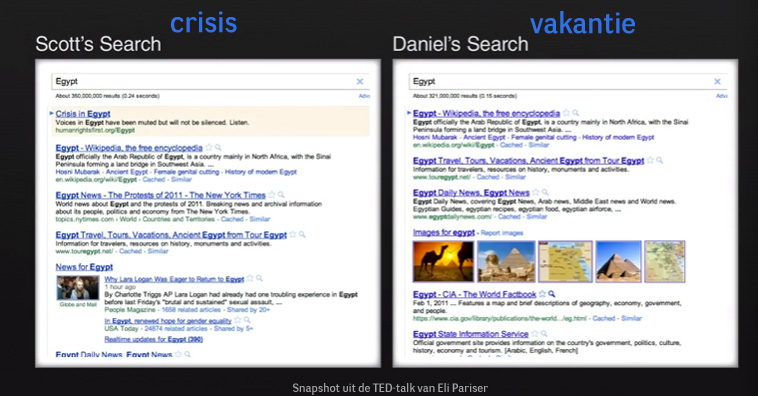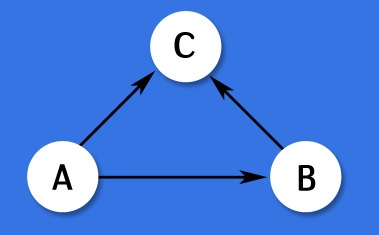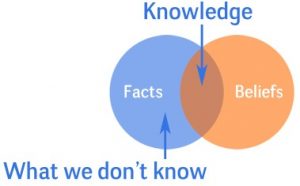Can you ever have too much knowledge? Or can what you do know get in the way of what you do not yet know?
Market information, about preferences of clients and about competitors is necessary for decision making and successful management of a company.
In this article we will investigate the three greatest threats to the growth of knowledge and we will close with three factors of success as a remedy.
1. Personalization of search results (computers)
In 2011 Eli Pariser wrote his book entitled ‘The Filter Bubble: What the Internet is Hiding From You’. You can follow his train of thoughts in this TED Talk where he shows how Google presents different results, depending on who is asking. It is possible that you are being shown different results then I am.

Facebook also adjusts the publications in your Timeline based on your preferences that are analyzed constantly.
Not only Google and Facebook practice this kind of personalization, the internet shows us what it thinks we want to see. You will not even see what has been omitted.

‘Variety is the Spice of Life’ has become an obsolete saying because today you are served more of the same. Because apparently you liked it at some time.
2. Online communities and networks (friends)
Today we gather our news from social networks on line. Not only the news you would read in the newspapers but also personal news from friends and relatives. “We’ve got a new dog”. “Yes, I already saw it on Facebook, beautiful doggy.”
Innocent and harmless, right?
Not quite if you are aware of the fact that you mostly communicate with people who have the same way of thinking you do. Birds of a feather flock together, they say. You are actually stuck in a filter bubble; a nice word for this is ‘online community’.
You may ask yourself: “What danger can there be in such a cosy online community? I will tell you what the danger here is. However intelligent your friends are… they do in a way limit your view of the world.
On the 19th of January 2016 the PNAS (Proceedings of the US National Academy of Sciences, vol. 113, no. 3) published an article written by Del Vicario et al, with the ominous title “The spreading of misinformation online”.
They researched how different types of information are spread. That is an interesting research topic because digital misinformation has been mentioned as one of the greatest threats to our society by the World Economic Forum.
“The global risk of massive digital misinformation sits at the centre of a constellation of technological and geopolitical risks ranging from terrorism to cyber attacks and the failure of global governance.” – Bron: World Economic Forum
You can find the research on the internet. Briefly it is about the fact that people gather around a topic based on what they already believe. This will result in homogeneous and polarized groups.
Del Vicario compared groups of scientists with groups around a complot theory. The first group is characterized by being verifiable and falsifiable; the second group is characterized by being a simplification of cause and effect and the acceptance of a certain degree of uncertainty.
The input by members of such a group is filtered because information that agrees with the convictions of the group is shared over and over. Repetition strengthens the convictions and there is no correction. This will be polarizing and reinforcing.
Community members reside in an echo chamber.
The influence of echo-chambers on the flow of information was researched by Lorien Jasny et al. The papers were published the 1st of October 2015 in Nature Climate Change. In this research the groups differed in regards to their points of view concerning the climate crisis and its causes.
“Our research underscores how important it is for people on both sides of the climate debate to be careful about where they get their information. If their sources are limited to those that repeat and amplify a single perspective, they can’t be certain about the reliability or objectivity of their information.” – Bron: Nature Climate Change
The picture below, by Jasny, simplifies what is happening inside an echo-chamber like that: A shares information with B and with C. Next B forwards the same information to C.

Then C concludes; “I have seen this information twice now, sent to me by different people that I know, like and trust. So… I assume it’s true!?”. This is something to take into account.
But that’s not all. With personalized search results and on line communications that cause you to hear more of the same, there is another weak link. And that brings us to number 3.
3. Selective observation and interpretation (us)
If you read this you are (only) human and you too encounter distortion of observations, interpretations, memory and conclusion. One person more then another – like more then 50% of drivers think they are better drivers than the average – therefore you too, and me.

It is a good start to be aware of it. Because our thinking process is vulnerable. It can go wrong in many ways; we are quite creative with that. I will mention a few of the many possible cognitive biases and thinking errors.
- Backfire effect: You encounter evidence of the opposite of what you believe and you react by simply enforcing your convictions. This is why it’s better not to go against people who believe vaccinations lead to autism.
- Confirmation bias: When you have an idea about how reality is composed you will not easily change your mind. Complot theorists will assume that any attempt to make them change their mind is part of a complot.
- Subjective validation: You assume something is true because it resonates with something that is important to you personally (Belief in horoscopes). Or you create a connection between two matters that in fact have no relation at all, because you really want there to be a connection (I was just thinking about you when you called).
In the 15th century Thomas Cardinal Wolsey said: Be very, very careful what you put into that head, because you will never, ever get it out. Nothing has changed since then.

How to escape being human and the selective processing of information that comes with that?
3 Succes factors for making new discoveries
To go on a voyage of discovery and to observe as well as possible it is important to detach yourself as much as possible of your own hypotheses and convictions concerning the subject that you want to investigate.
Start with being conscious of what you believe in, by for example saying it out loud or by writing it down (succes factor 1). About what are you sure? How much do you want it to be really true? What do you know you are leaving out? And about what do you have doubts?
Those are the areas that you could map out, but there are two more missing areas: The matters of which you don’t know that you don’t know them. And the matters that you think you are sure about but in reality don’t quite add up.
The second succes factor is to be open to new information with a mind that is not weighed down. A well known Zen story illustrates the importance of an empty mind, or Sho Shin in Japanese.
“Nan-in, a Japanese grand master during the Meiji era (1868-1912), received a university professor who came to inquire about Zen.
Nan-in served tea. He poured his visitor’s cup full, and then kept on pouring.
The professor watched the overflow until he no longer could restrain himself. “It is overfull. No more will go in!”
“Like this cup,” Nan-in said, “you are full of your own opinions and speculations. How can I show you Zen unless you first empty your cup?”
— Quote from Shaseki-shu.
The first two succes factors are summarized beautifully in the motto of Bruno Ernst, founder of the first Dutch public astronomical observatory in Oudenbosch: “Nescius omnium curiosus sum”. This translates as: “I know nothing but am curious about everything”. It’s a beautiful version of the paradox by Socrates who said, freely translated: “I know that I know nothing”.

The third succes factor is to take care that you have a system – a discovery tool – that will give you input from new sources. So without personalized search results, disconnected from your own social network and disconnected from your own feedreader with your favorite websites that are so well known to you. Of these three, the last one is the most easy to fulfill. In fact, it’s where you start.
Foto credits: Eric Schmidt, Charles Haynes / Flickr / CC BY-SA 2.0; Bruno Ernst at Tivoli, Astroforum; Thomas Wolsey, Sampson Strong (circa 1550-1611), Public Domain via Wikimedia Commons.

Recent Comments